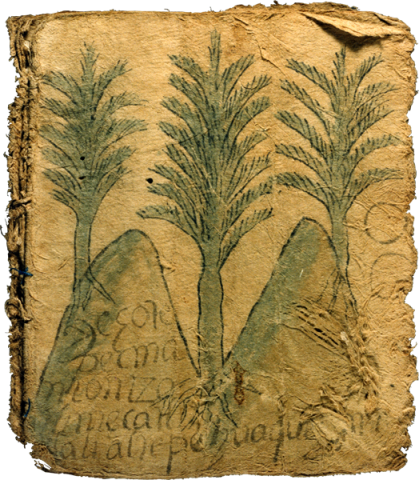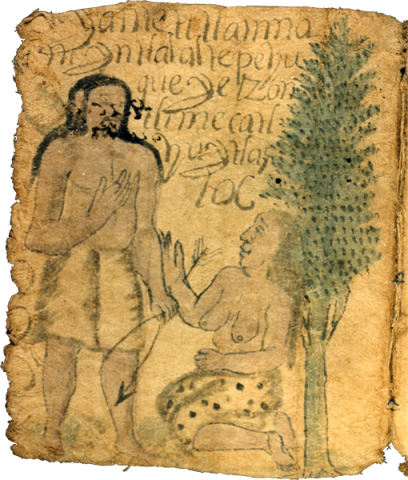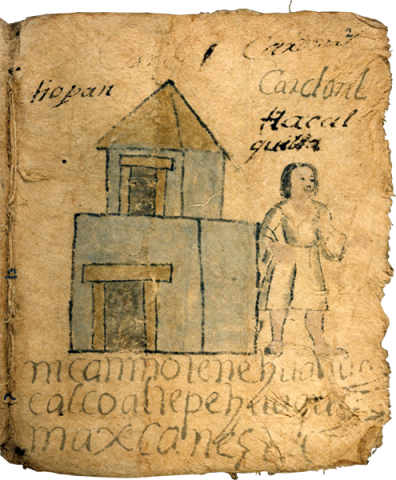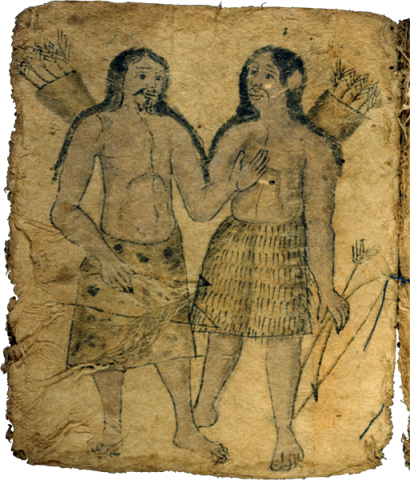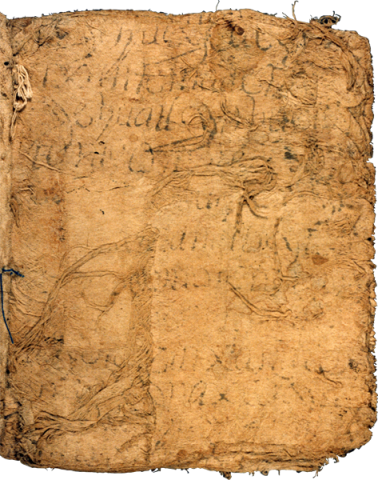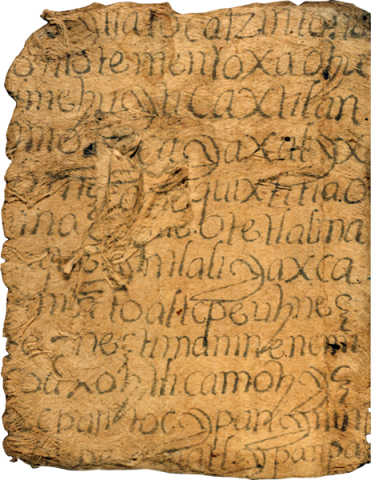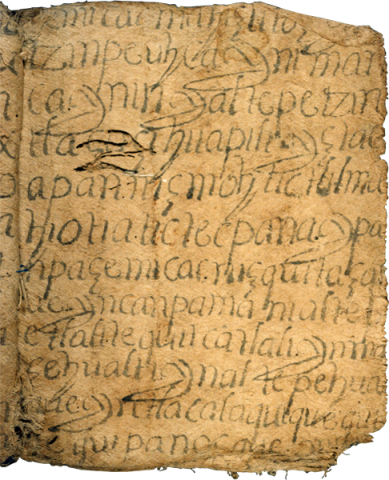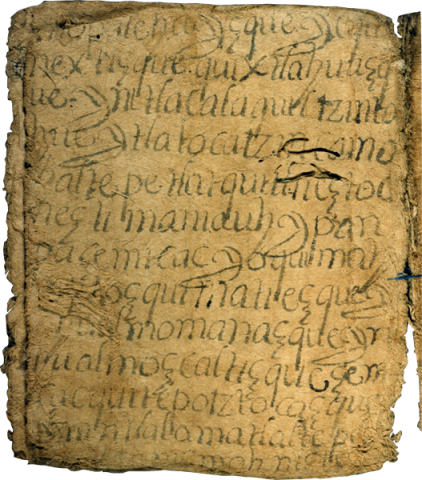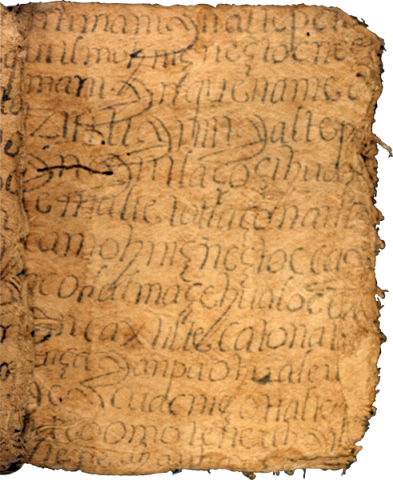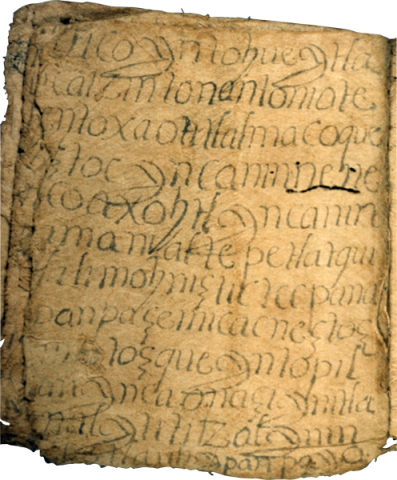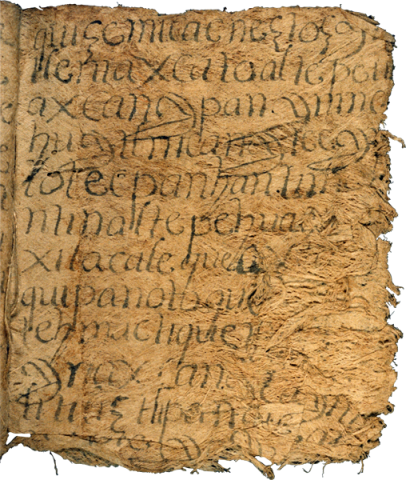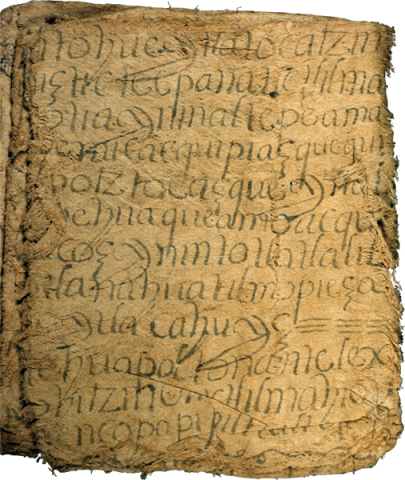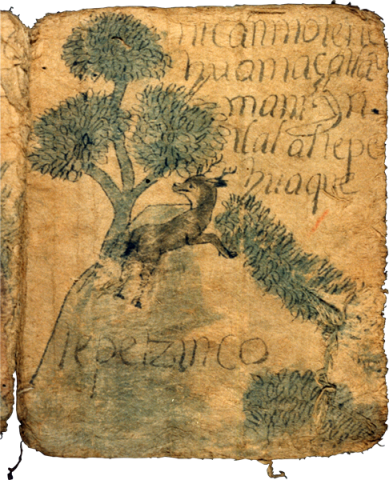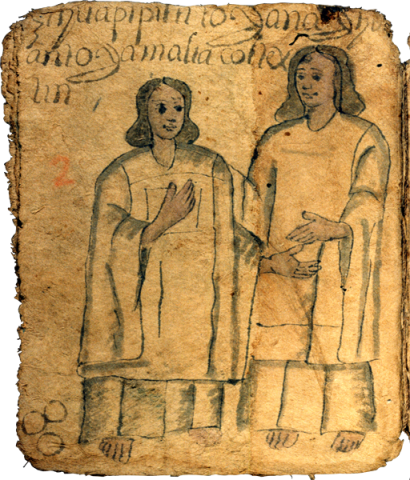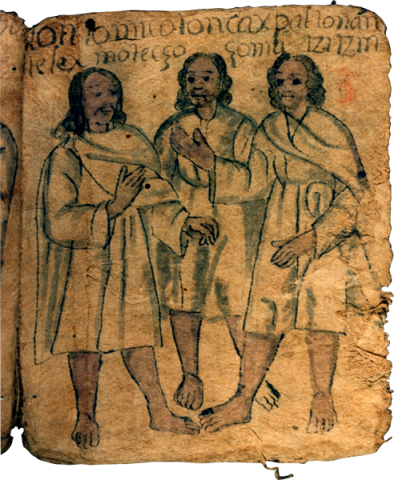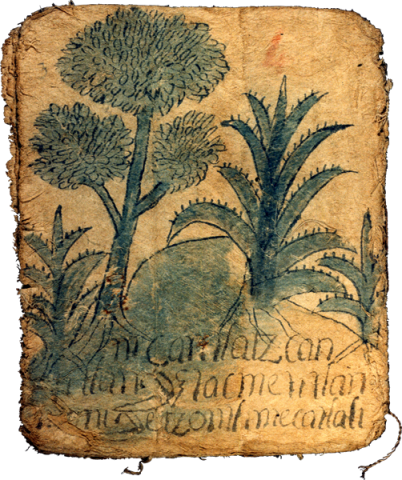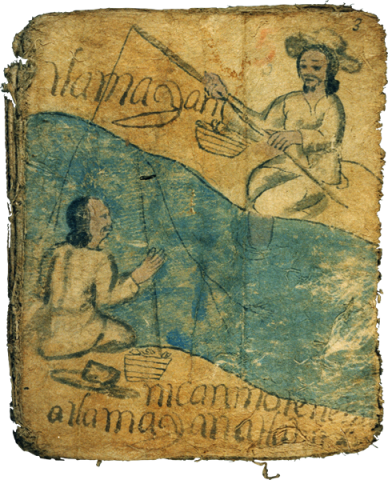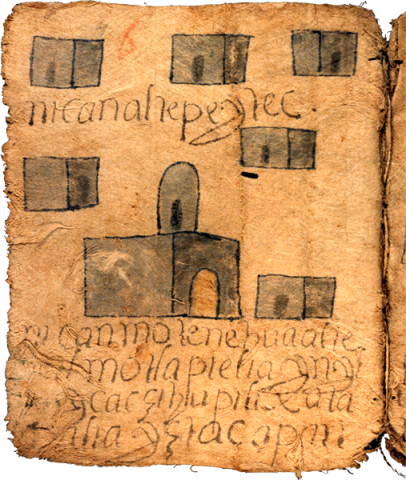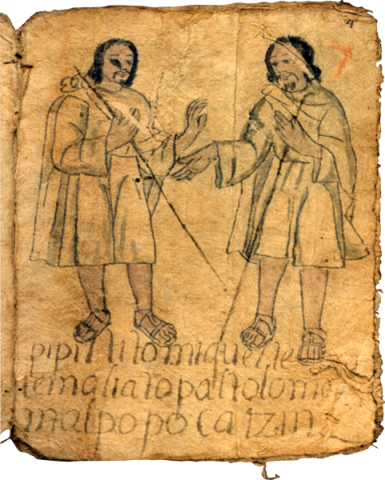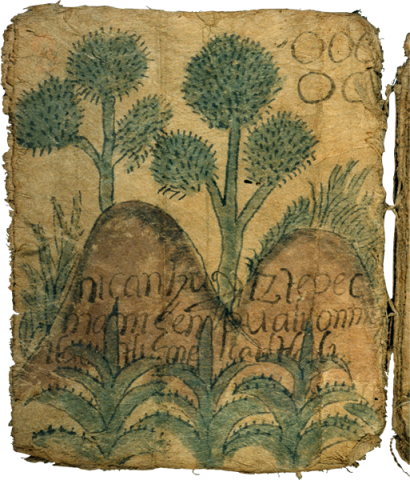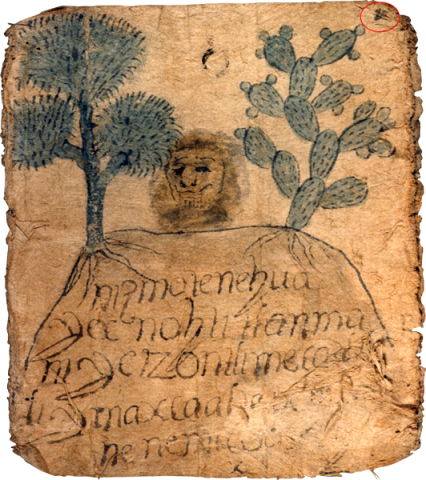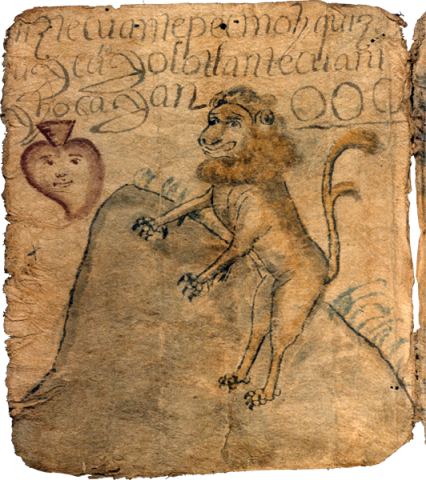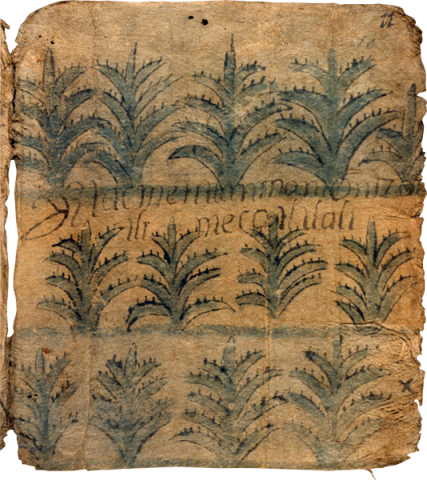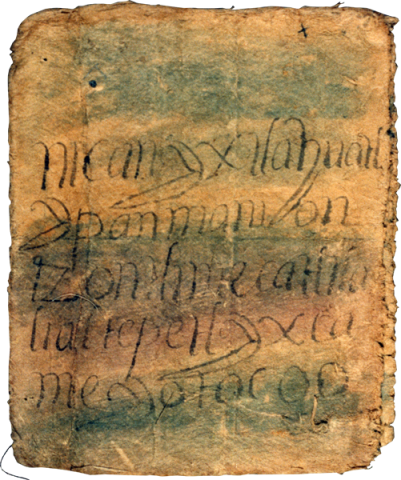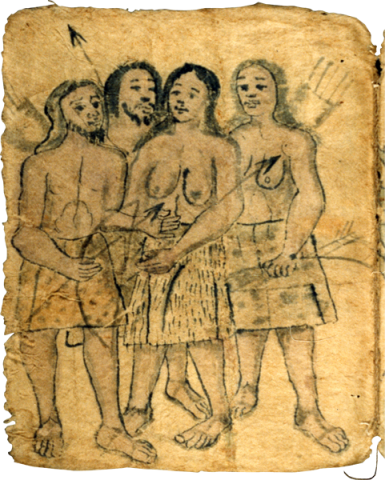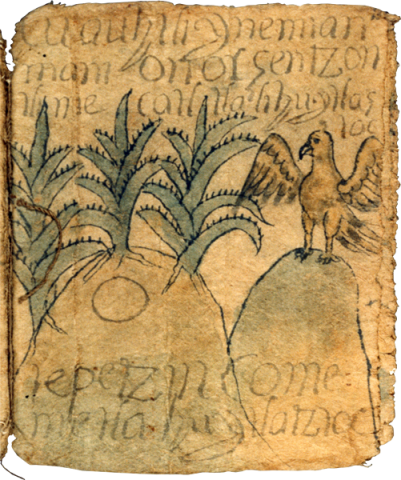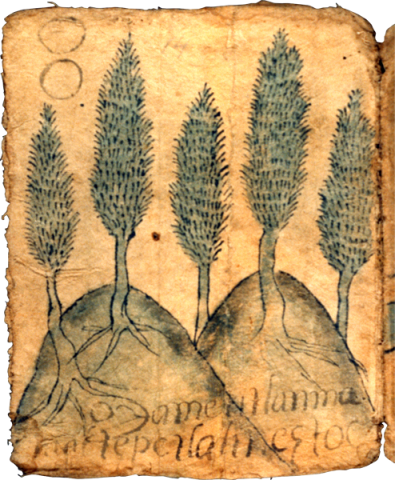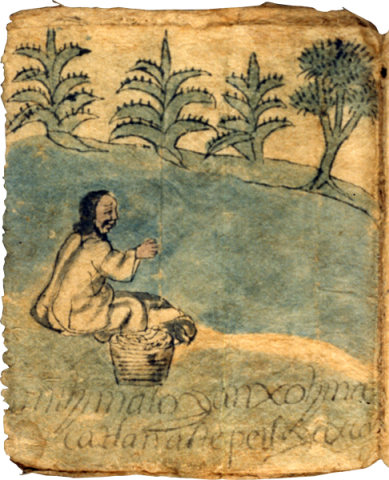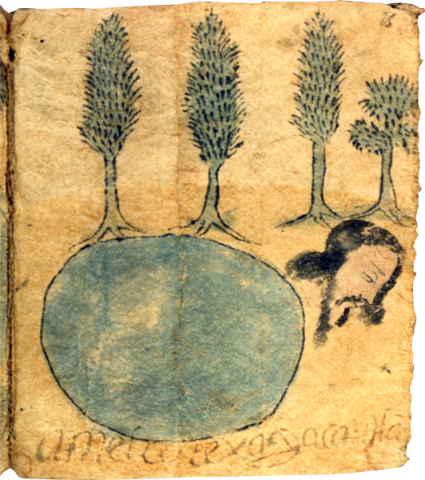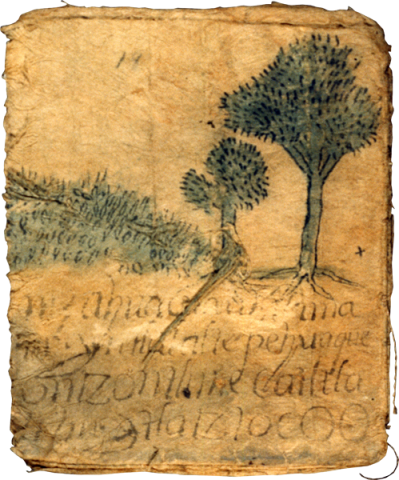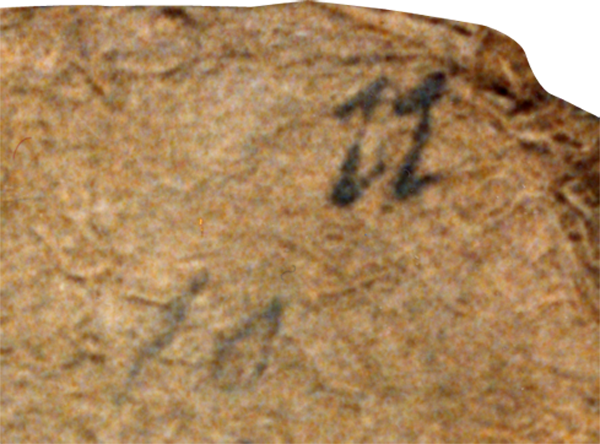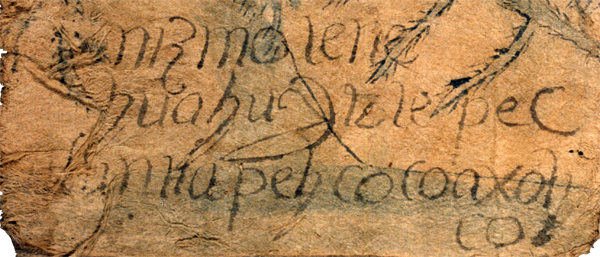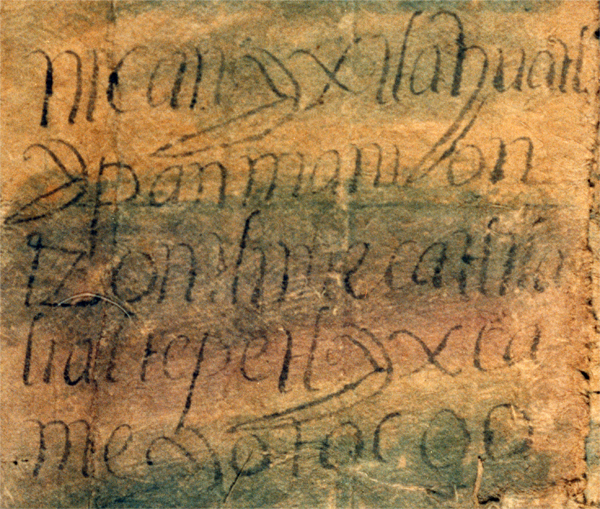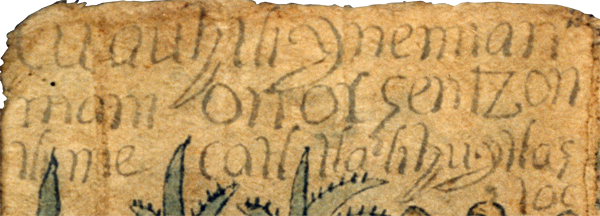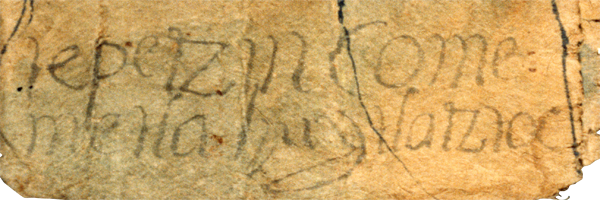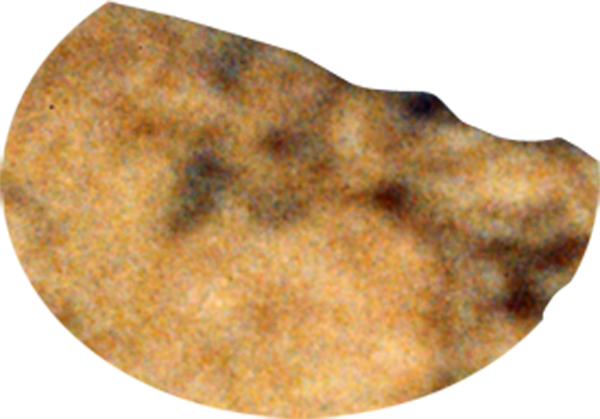This manuscript is associated with the indigenous community of El Cardonal in the modern state of Hidalgo, republic of Mexico. Some time during the Spanish colonial period, the name changed from Santa María Iztacapan to El Cardonal. The manuscript is an unpublished example from the genre called “Techialoyan Codices” — late colonial, Nahuatl-language manuscripts written and painted on amatl (amate in Spanish, the name for a native fig-bark paper). Techialoyan manuscripts date from the late-seventeenth and early eighteenth centuries. This particular one is not found in the catalog published in the Handbook of Middle American Indians in 1975. This manuscript has sixteen folios measuring about 8.5” by 10”, in a typical organization for the genre, of two-sided, single leaves that have been bound on the left margin. It is both pictorial and textual. Four folios contain full, running text in Nahuatl. The remaining folios contain graphic images with brief explanatory texts. Graphics tend to represent landscapes in and around the community. They also show human figures on the landscape. Two figures identified as Chichimec warriors and a founding couple are dressed in skins and carry bows and arrows, but most people wear the white cotton clothing donned by indigenous people in the Spanish colonial period. Two of the dignitaries are doña Ana and doña María Cortés (indigenous women who took the name of the conqueror, Hernando Cortés after baptism). (Stephanie Wood)
Iztacapan, Manuscrito Techialoyan de
Title variants:
Manuscrito Techialoyan de Santa María Iztacapan (El Cardonal, Hidalgo, Mexico)
Principal editor:
Stephanie Wood
Provenance:
This manuscript was in the private collection of Jay I. Kislak in Miami Lakes, Florida, in the late twentieth and early twenty-first-century. The manuscript was for sale for a time in the mid-1980s at H.P. Kraus Rare Books and Manuscripts in New York. It is not known if Mr. Kislak purchased the manuscript from Kraus or if it changed hands one or more times before he acquired it. Prior to the 1980s, its ownership history is unknown. Mr. Kislak donated the manuscript to the Library of Congress in 2007.
